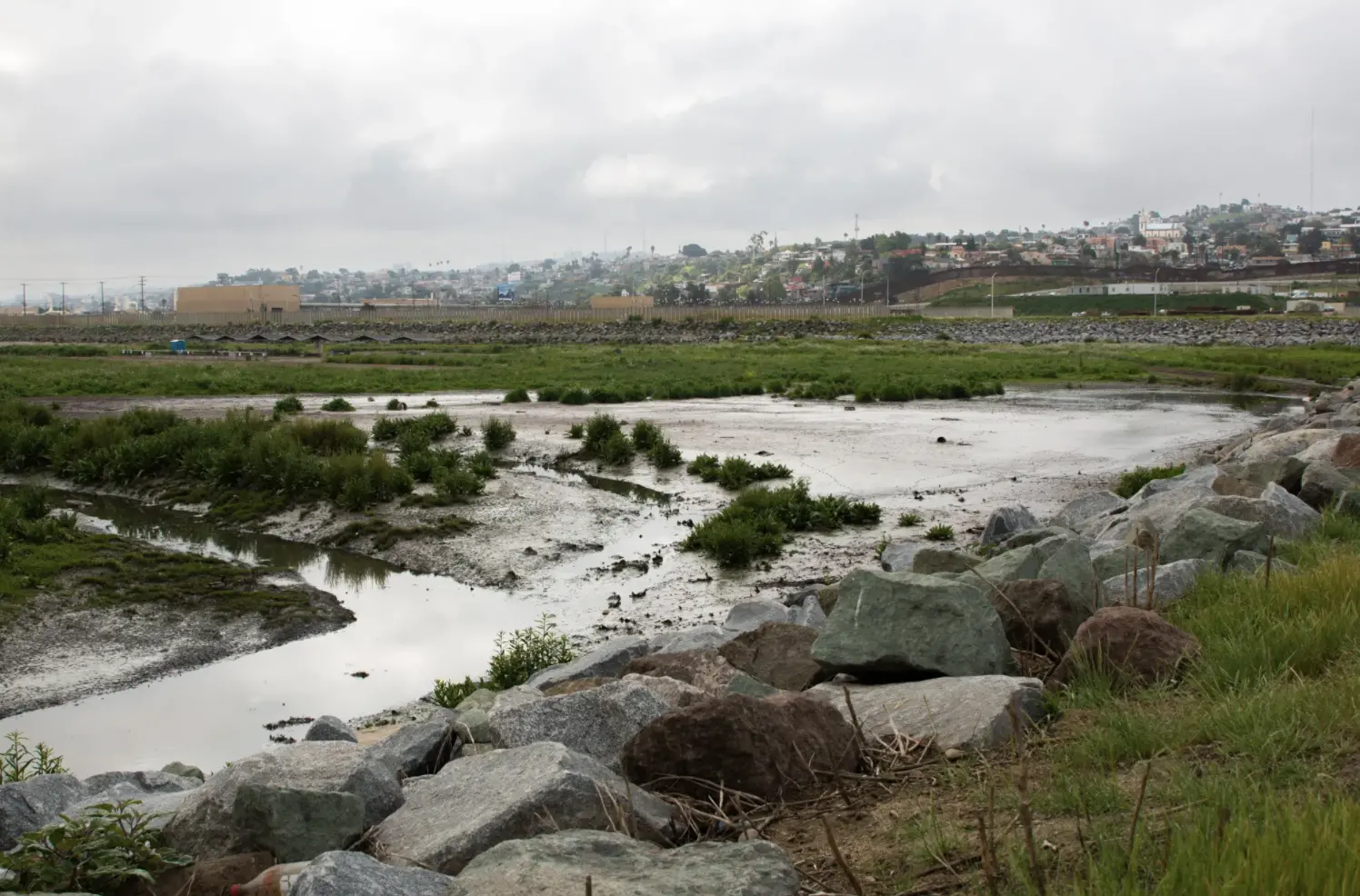
Even though the federal government gave San Diego $300 million to alleviate the decades-long problem of Tijuana sewage spilling over the U.S.-Mexico border, and even though everyone seems to generally agree it should be spent on a bigger border wastewater treatment plant, and even though all the necessary parties seem to be working harmoniously on the plan, the money can’t be spent.
That’s due to some sticky bureaucratic red tape: Congress needs to pass, and the president needs to sign, legislation allowing the U.S. Environmental Protection Agency to give that $300 million check (secured under the U.S.-Mexico-Canada agreement) to the U.S. International Boundary and Water Commission.
“There must be authorizing language allowing the EPA to give that money to the IBWC, which is an international organization. It’s not a government agency,” said Larry Cohen, chief of staff for Rep. Juan Vargas, a Democrat who represents District 51, which includes California’s borderlands with Mexico.

As a nonprofit journalism organization, we depend on your support to fund our nationwide Connected Coastlines climate reporting. Donate any amount today to become a Pulitzer Center Champion and receive exclusive benefits!
That “authorizing language” is something Vargas and the rest of San Diego’s Congressional delegation have been working to pass since at least June.
MaryAnne Pintar, chief of staff for Congressman Scott Peters’ office, said the language passed the U.S. House of Representatives but stalled in the Senate.
“In the Senate, getting language like this added to a larger bill requires support from committee leadership from both political parties. We have not yet been able to cross that hurdle,” Pintar wrote in an email.
It’s a short amendment, at just 350 words, but it does two big things: It gives the EPA permission to give the economic treaty money to the IBWC, and it says the money should be used to treat any water flowing from Mexico into the U.S., including stormwater.
The stormwater piece is significant, said Chris Helmer, director of environment and natural resources for Imperial Beach, a coastal border city.
“It’s why we sued (IBWC) in the first place,” Helmer said.
Imperial Beach sued IBWC back in 2018 alleging the agency violated the federal Clean Water Act by allowing millions of gallons of raw sewage, heavy metals and other contamination to spill into San Diego, shuttering beaches along the Southern California coast and bringing questionable water quality to the watershed and surf zone. The city and other Californian groups that joined their suit agreed to put down their legal swords in 2020 to allow the EPA to work on finding a solution with that $300 million.
“IBWC owns and manages that flood control channel … and our argument was, they have this whole area where they should be actively managing and controlling pollution,” Helmer said, and that includes not just the sewage that Tijuana funnels directly to the IBWC plant, but all the other water that spills over the border into the Tijuana River flood plain on the U.S. side when it rains. For context, the last rains from Feb. 15 and March 4 sent at least 2.1 billion gallons of water into that San Diego floodplain.
Helmer said previous IBWC administrations were resistant to treating stormwater. This legislation would essentially require that $300 million and other EPA money be used to protect residents in the border region from pollution in all types of water.
Cohen, from Vargas’ office, said San Diego’s delegation tried and failed to get that amendment passed in the $1.5 trillion spending bill passed recently. So they’re hoping Congress will OK it under the next iteration of the Water Resources Development Act, which historically focuses on matters related to water navigation, flood risk and restoring aquatic ecosystems.
The real question is, will the glacial pace of Congress also slow the $300 million border treatment plant expansion everyone is so ga-ga over?
I don’t know.
Helmer, of Imperial Beach, isn’t worried because he thinks there are probably other ways to get IBWC that money.
“What I want to know is, who in Congress is holding it up?” he said.








